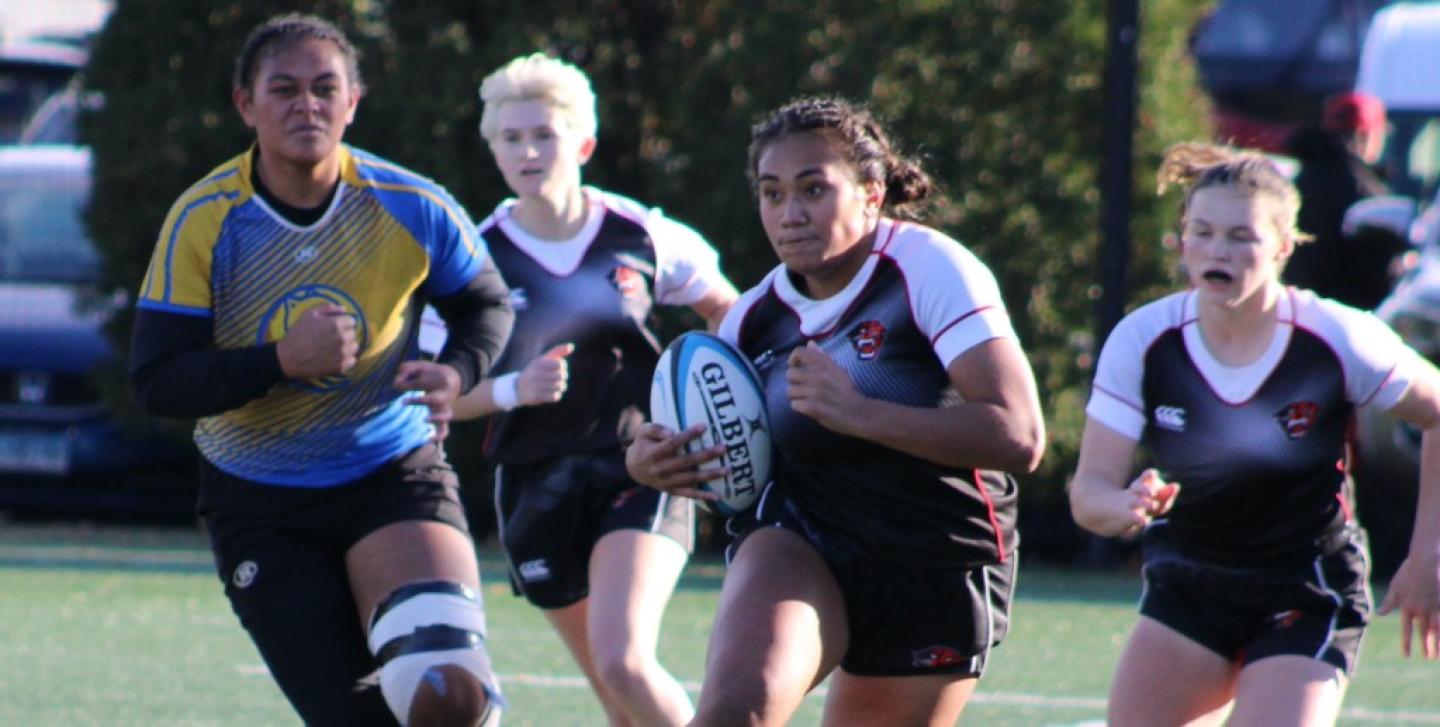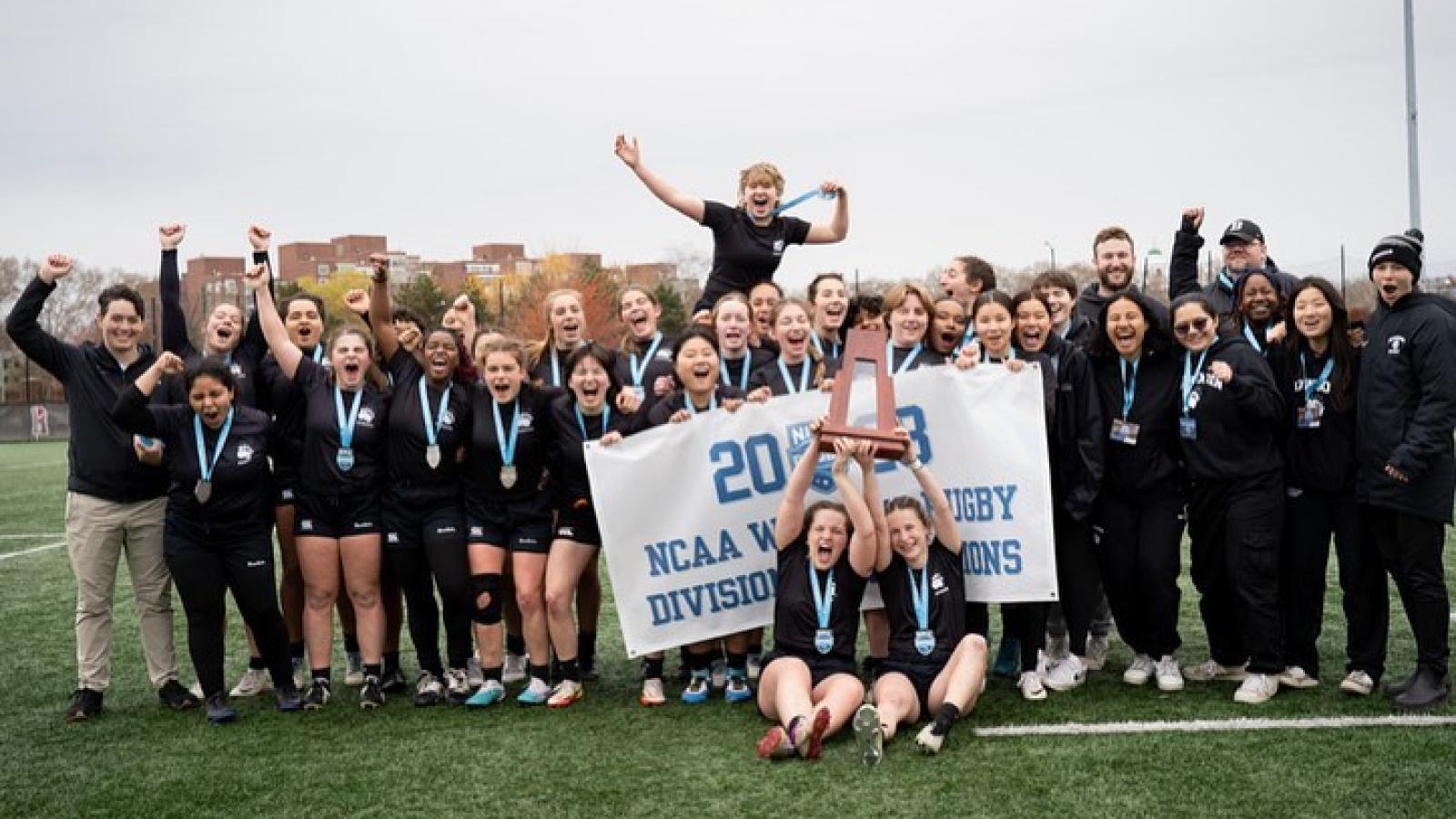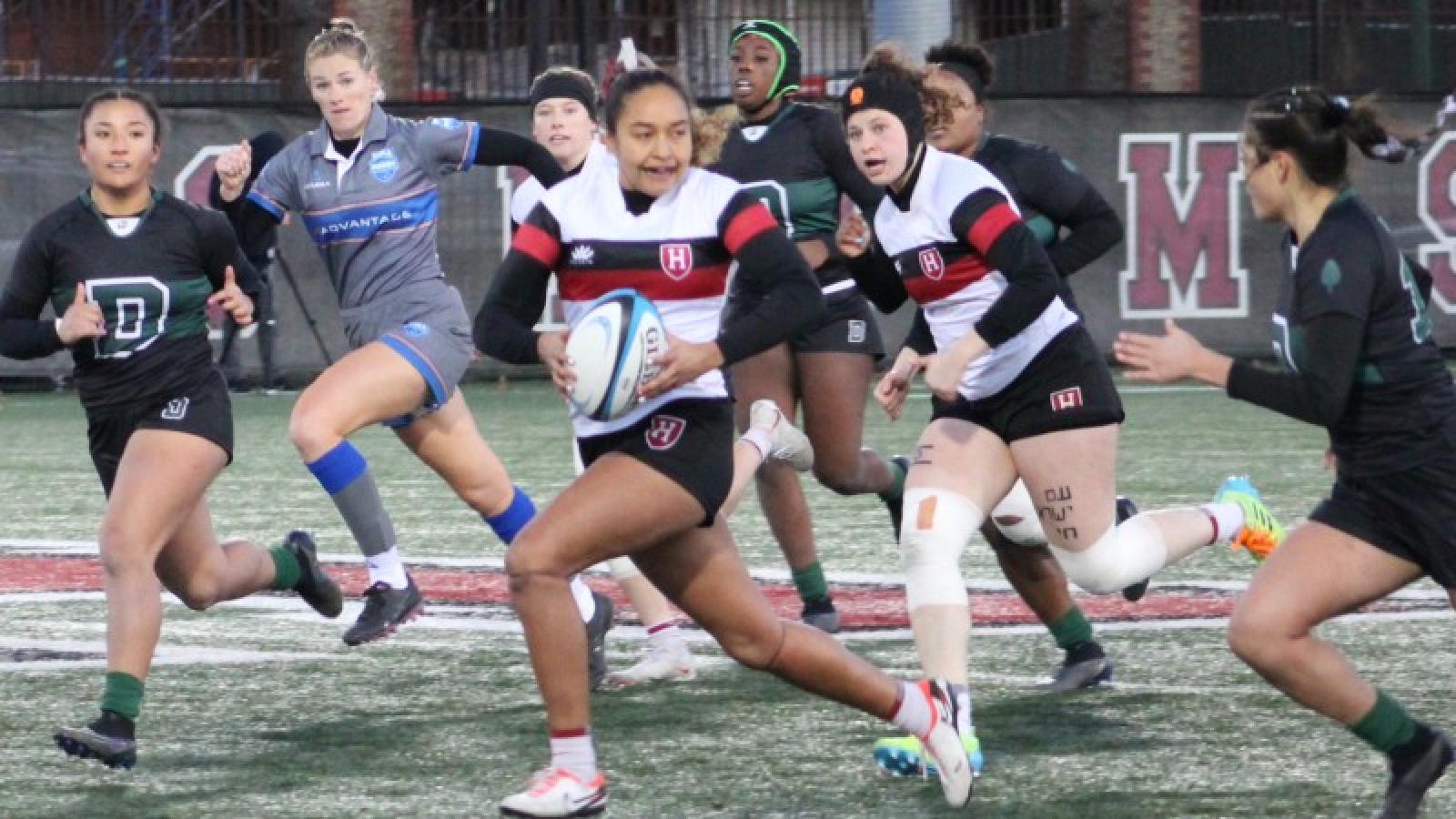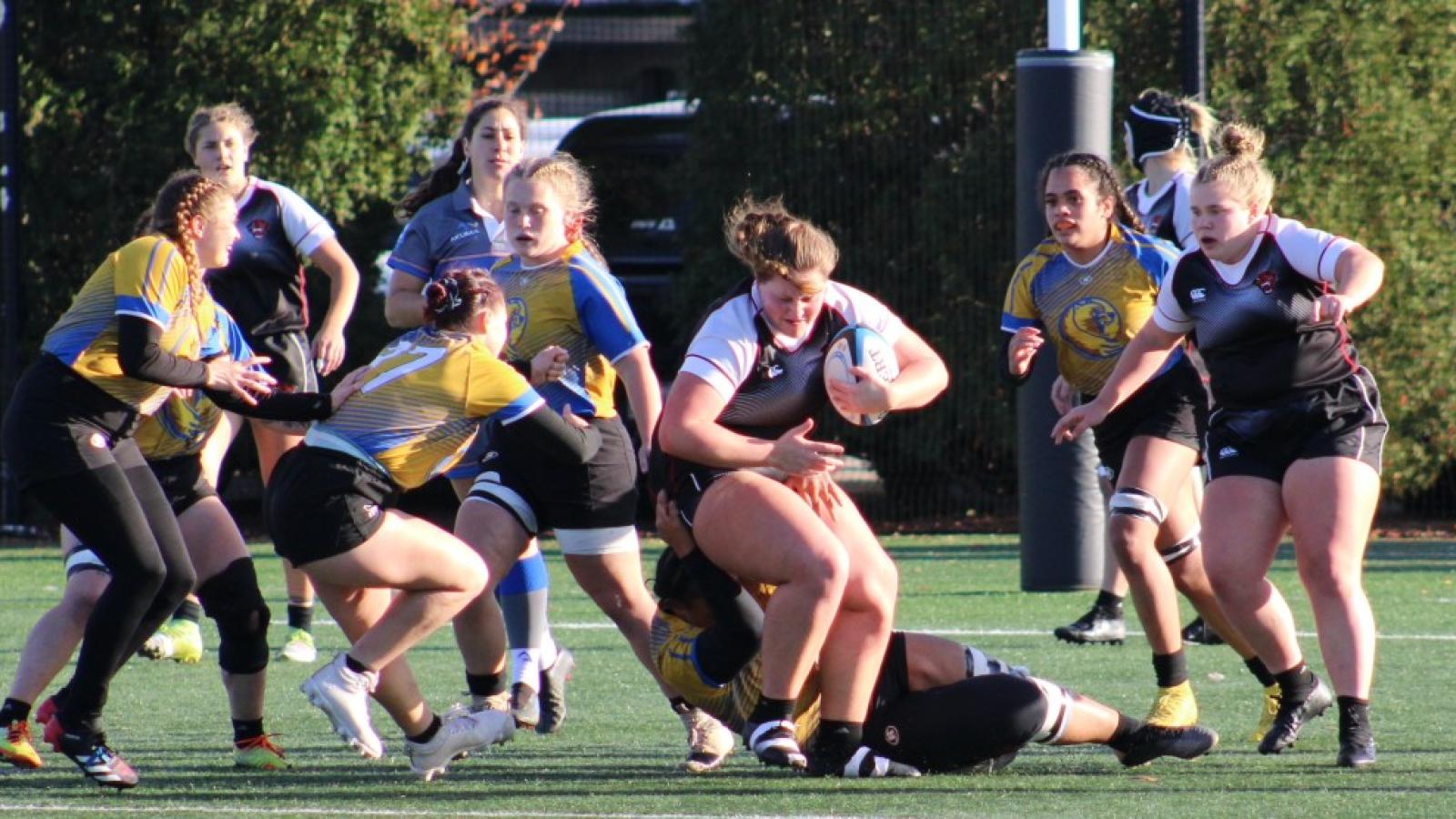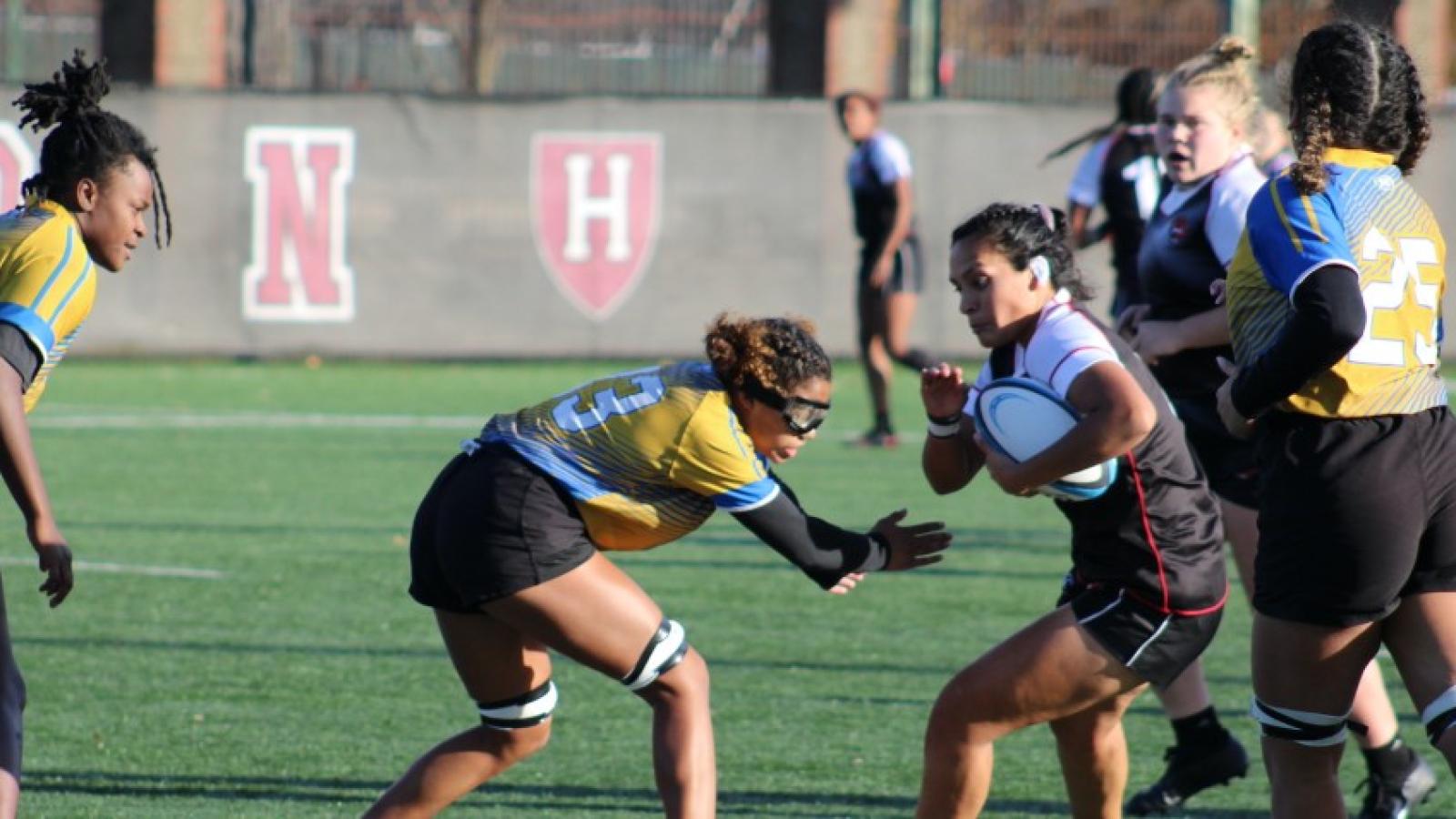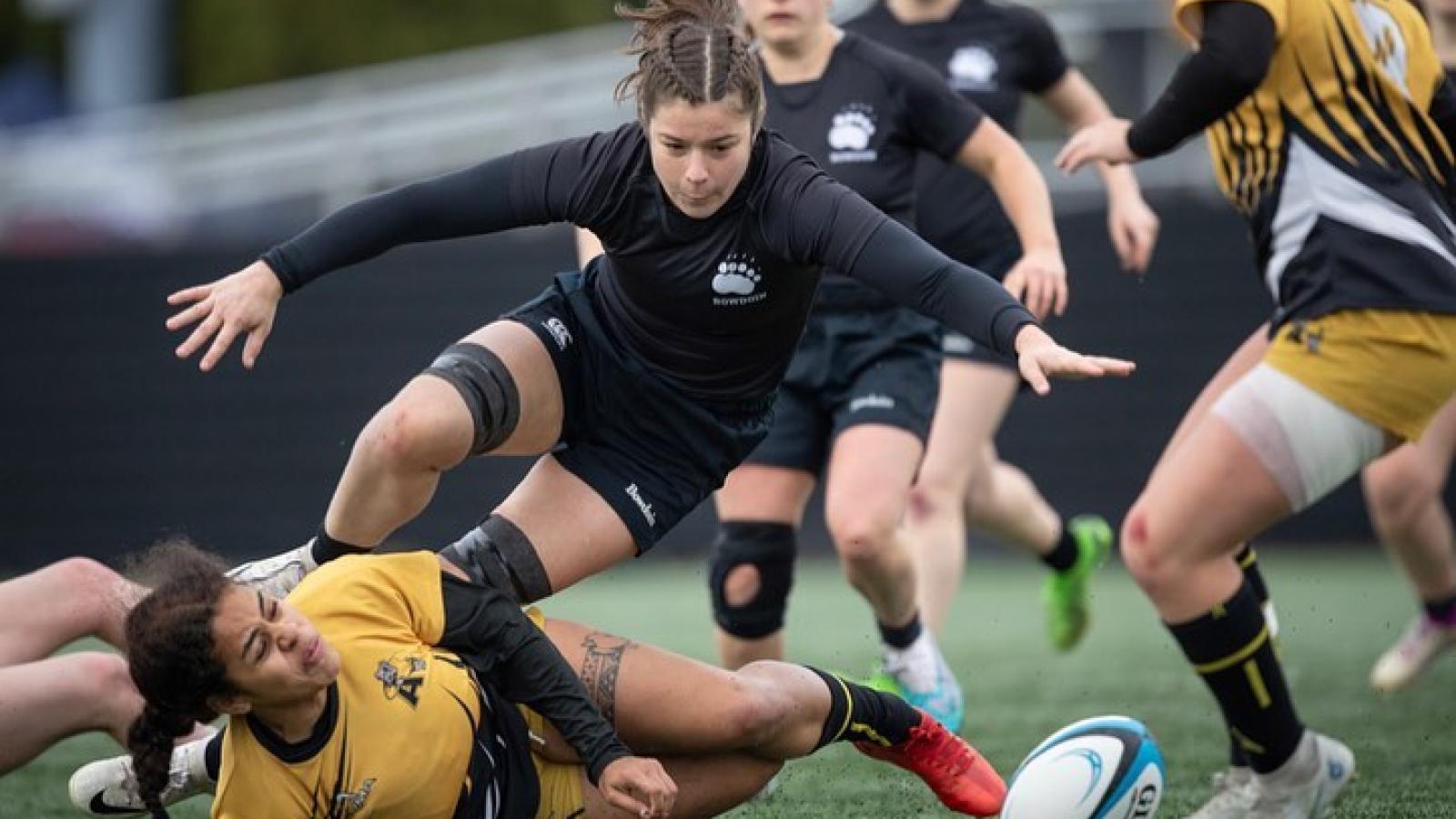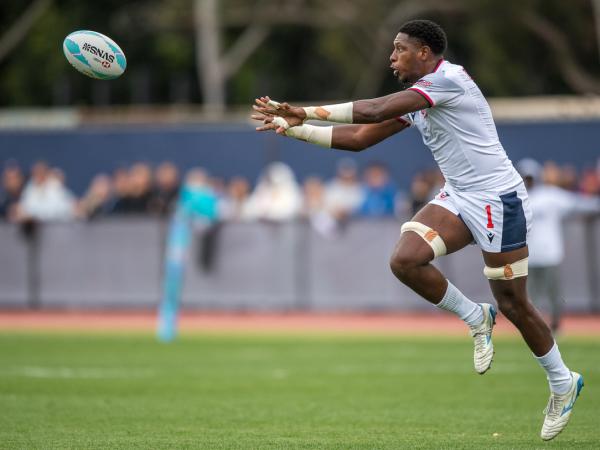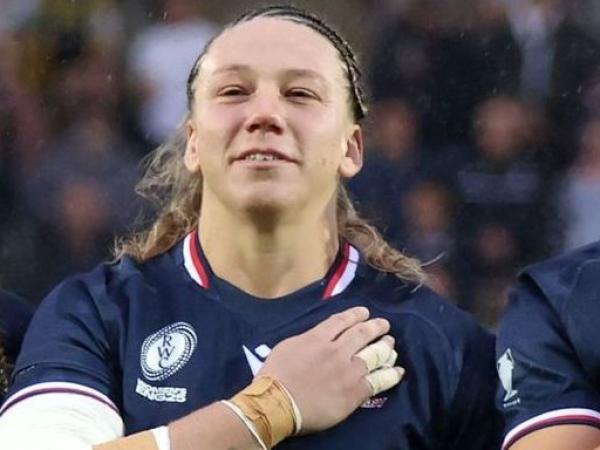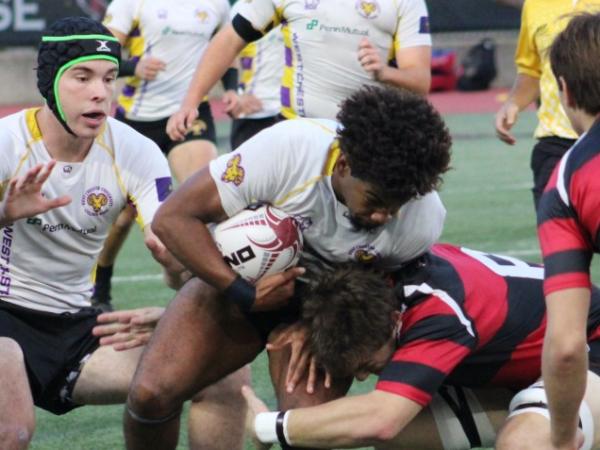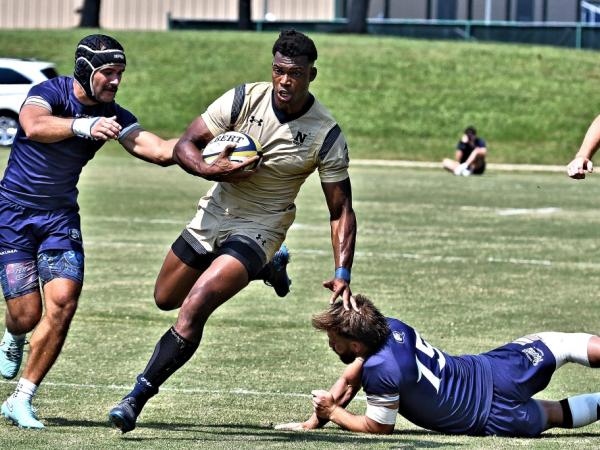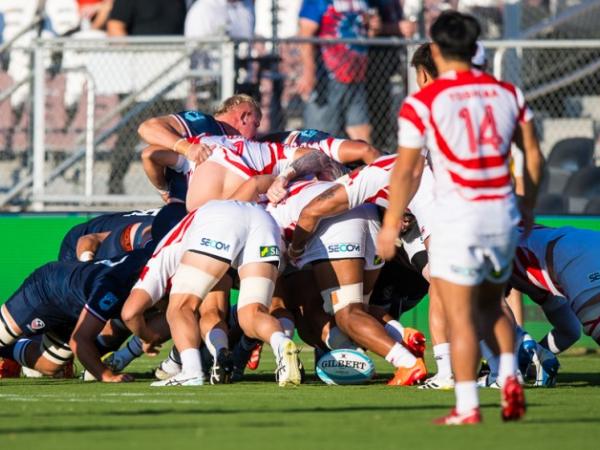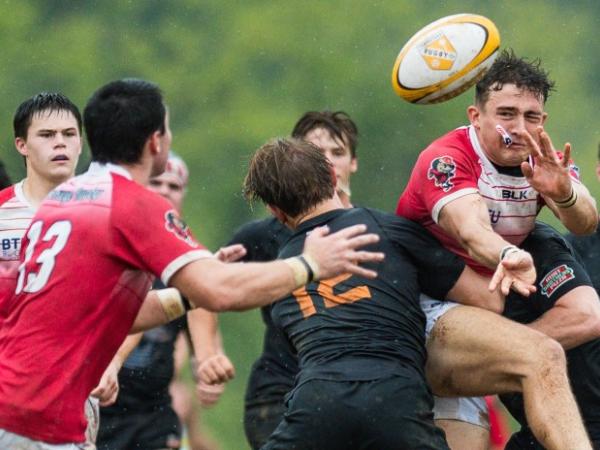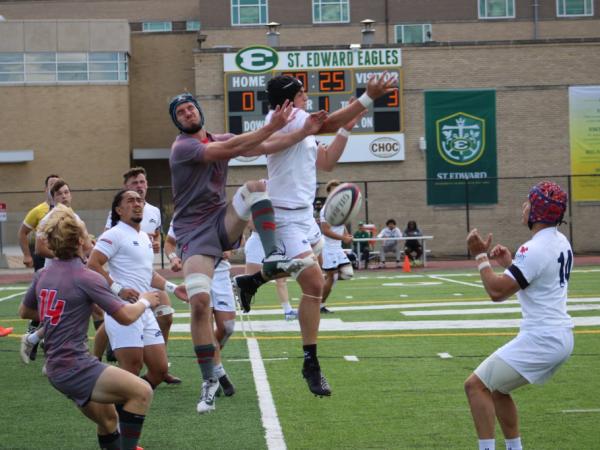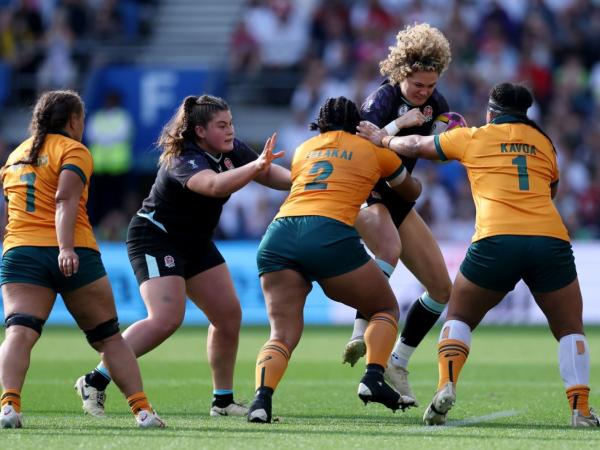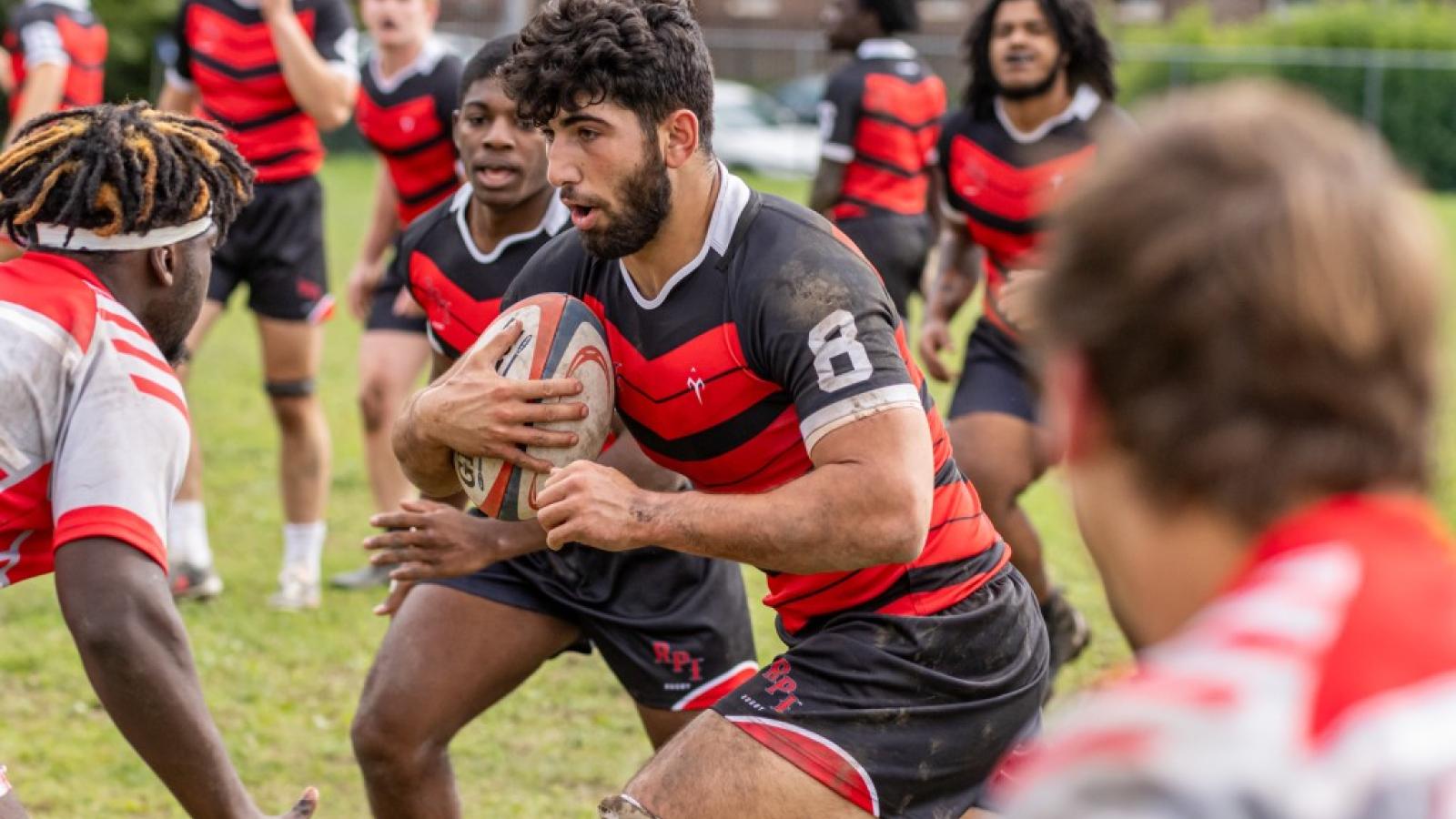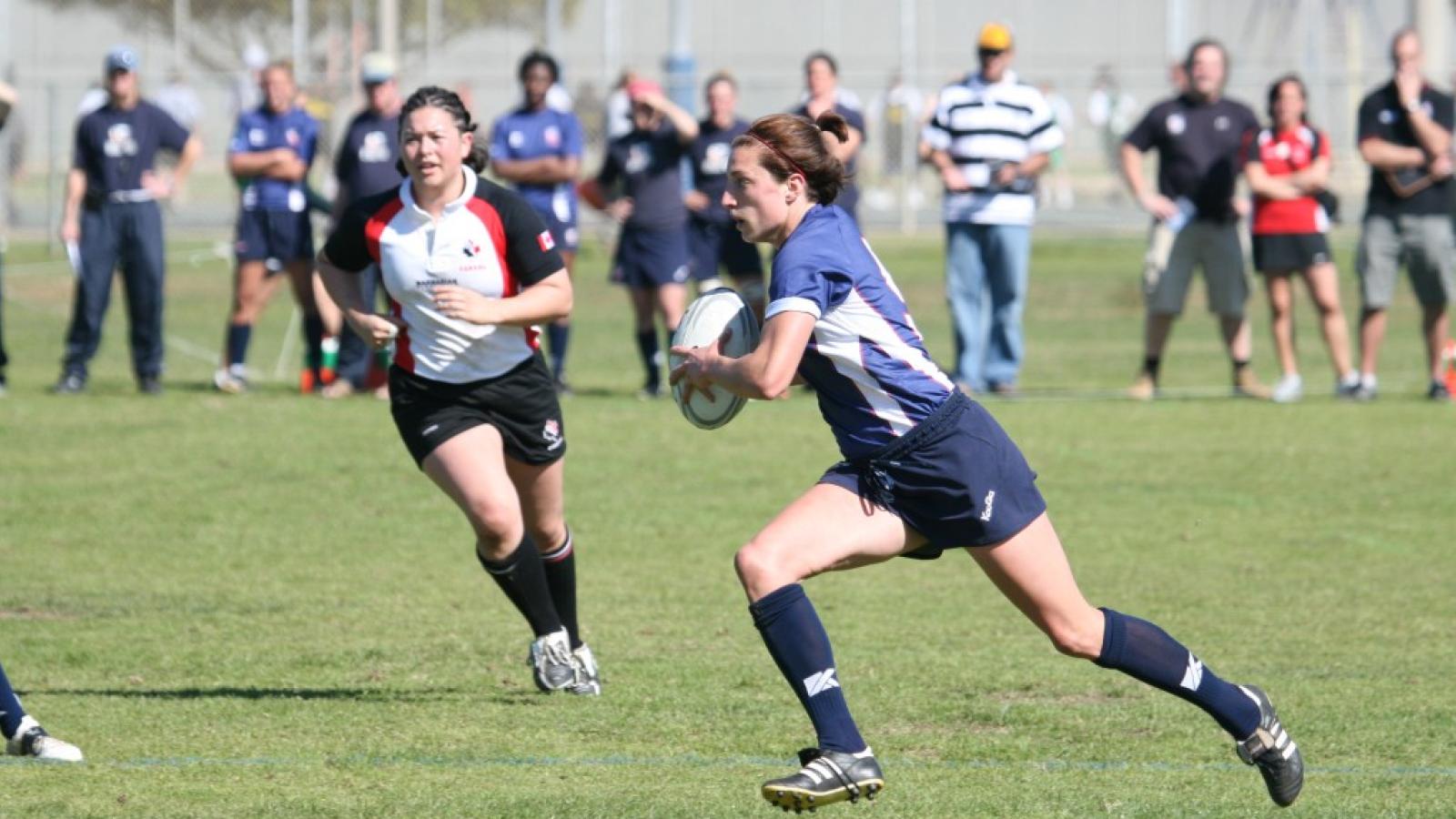The National Intercollegiate Rugby Association crowned their champions Saturday at Harvard's Mignone Field, with DI, DII, and DIII winners celebrated.
Harvard won the DI final 20-12 over Dartmouth in a high-level championship game that certainly showcased NCAA varsity women's rugby in an excellent light. More details here: Harvard Takes Sparkling NIRA DI Final Over Dartmouth
Bowdoin Wins DIII
For the fourth straight time Bowdoin won the DIII NIRA divisional championship, defeating Adrian 51-17. While Adrian defended hard and did not give up soft tries, and while the Bulldogs were aggressive on attack, Bowdoin's organization on defense and their unity on attack led to their victory.
What Bowdoin was able to do was play wide and fast. If the attack didn't find space or a score on one side, they simply regrouped and found another way. This requires a unity of purpose, trust for your teammates to do her job, and fitness. Bowdoin had all of that and also played fast. A big break from No. 8 Rebecca Vakarau, who would be named MVP of the game, set up the Polar Bears for their first attack, and eventually center Katie Stomma would run a cutback line off a tap penalty move to go over.
Adrian answered with an interception from center Pendo Miregi, who raced 55 meters to score and give the Bulldogs some momentum. Adrian used No. 8 Paige Longscore to thunder through tacklers and added to that the acceleration of flanker Kiki Peters. But this is a young Adrian team and wanted to be extra-careful in securing ball through the phases. The result was slow ruck ball held for a few seconds as they set up their shape. This allowed Bowdoin's defense to prepare, meaning Adrian had to bust through a unified line. They came close, but it was hard work and the likes of Vakarau and flanker Maggie Norton were quick over the ball to take it back for Bowoin.
Bowdoin worked the ball through the hands to try to set free wing Saniya Ridley. She was stopped the first time, but good draw-and-pass from Lauryn Eisenhart and Runa Katayama eventually put her through. A snappy counter-attack on a kick from wing Lulu Linkas, with Vakarau helping too, set up Stomma's second, and then Linkas scored one herself. Bowdoin worked their system, this time to the left, where Linkas fought brilliantly to stay in-field and get over for the strong finish. Eisenhart added a penalty to make it 27-5 at halftime.
In the second half Vakarau powered through for a try and after that Norton stole a lineout throw and charged ahead. Vakarau drew in attackers with prop Stella Johnson helping, and the ball was shipped wide fora try in the corner for Ridley.
Then the Polar Bears set up perhaps the best try of the day. They went wide to Linkas but Adrian stopped it. No matter; Bowdoin re-set and went to Ridley. She, too, was halted. But undeterred the Polar Bears were ready to attack left again, and Linkas put the ball inside for scrumhalf Colleen Doucette to take and score. It was a classic example of attention to detail and roles. No one gave up on the basic plan, and that meant when it didn't produce a try the first time, they kept at it.
Adrian did not back off and scored twice through explosive wing Arial Rathall and Peters on the flanker. Bowdoin capped it off with on more try.
Adrian will learn from this and come back stronger, but Bowdoin's teamwork is something to behold.






